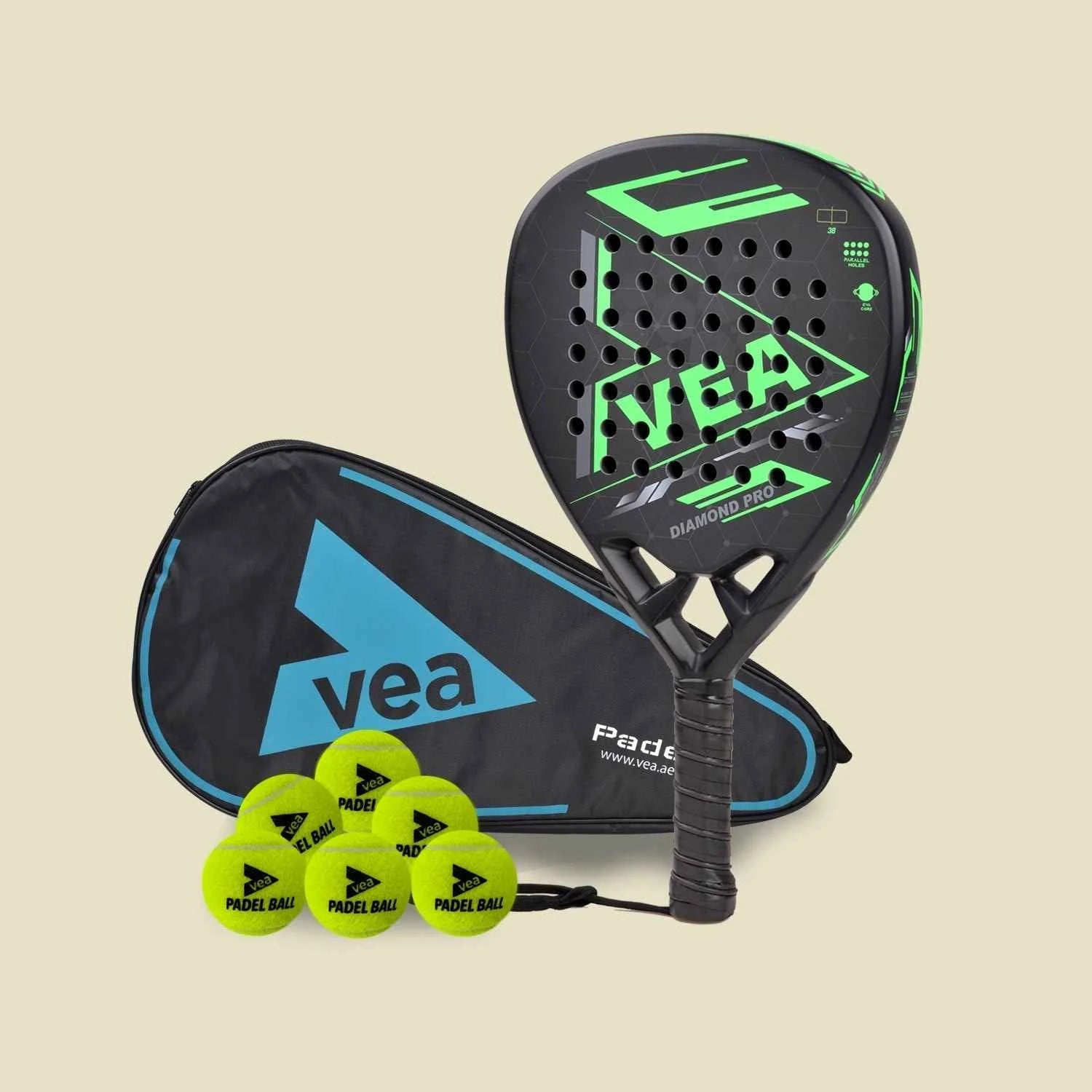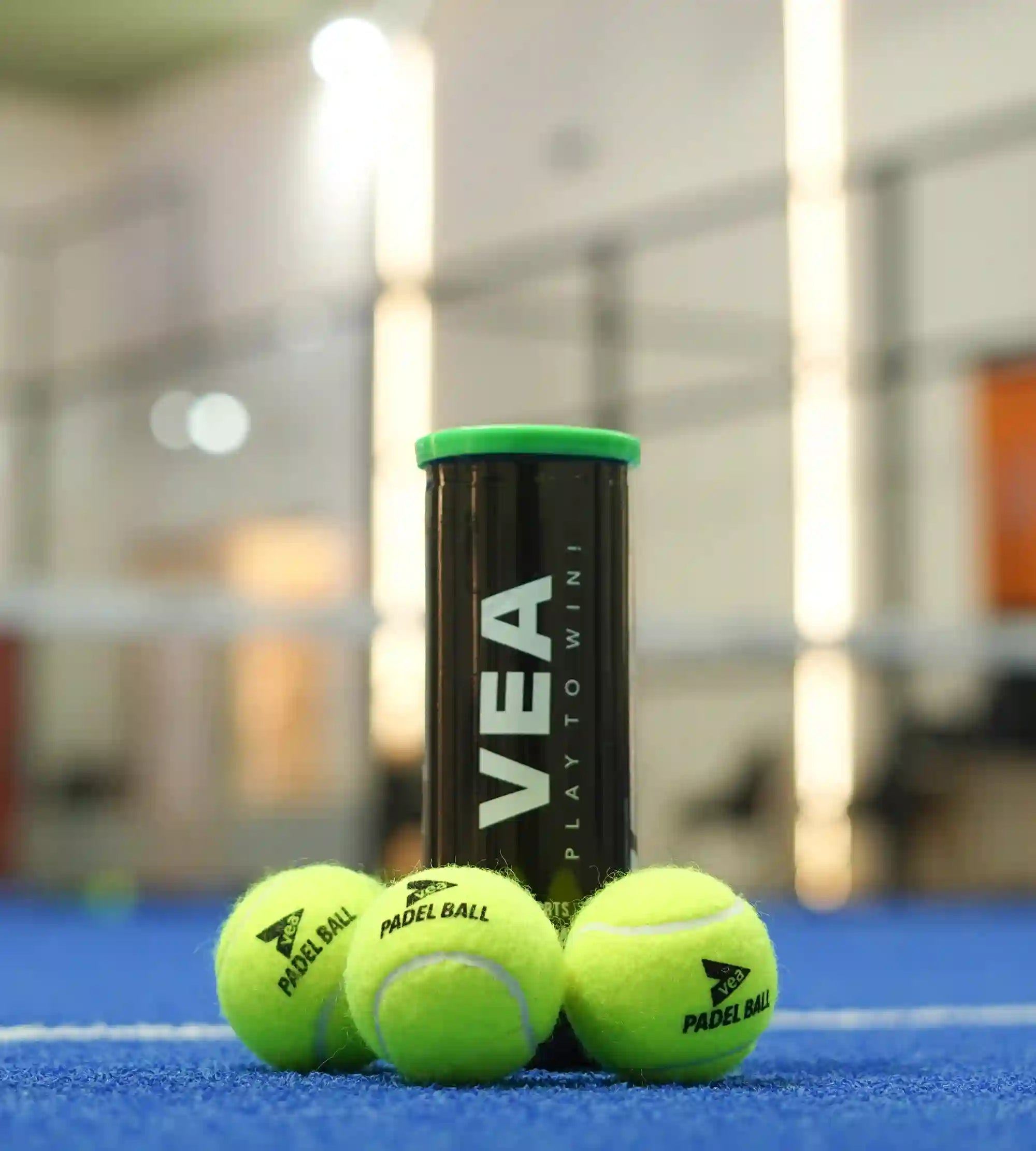Understanding Padel Racket Basics
Padel rackets aren't just stylish accessories – they're precision tools. Whether you're a novice or a seasoned player, understanding the anatomy of a padel racket is your first step toward smarter decisions on the court.
What is a Padel Racket?
Unlike tennis rackets, padel rackets have no strings. They’re made from a composite material and perforated with holes to reduce air resistance. They come in various shapes and balances, each influencing your play.
Key Components:
-
Frame: Generally made from carbon or fiberglass for strength and flexibility.
-
Core: Typically EVA or FOAM, each giving different ball response.
-
Surface: Can be smooth or textured to control ball spin.
Why the Right Racket Matters
Performance Impact: The correct racket can improve your accuracy, control, and power, giving you the edge in tight matches.
Injury Prevention: An unsuitable racket may strain your elbow or wrist. Using the correct weight and grip can help avoid repetitive strain injuries.
Player Progression: A racket that complements your skill level can speed up improvement, helping you transition smoothly from beginner to advanced levels.
Racket Types by Shape
Round Rackets (Control):
Perfect for beginners, offering a wide sweet spot and better control.
Teardrop Rackets (Balanced):
Ideal for intermediate players seeking a balance between power and precision.
Diamond Rackets (Power):
Best for experienced players looking to dominate with aggressive smashes.
Racket Weight and Balance Explained
Light vs Heavy Rackets:
-
Light (340-360g): Easier to maneuver; better for quick reflexes and less arm fatigue.
-
Heavy (360-390g): Offers more power but can be harder to control.
Balance Types:
-
Head-Heavy: Boosts power, ideal for attackers.
-
Even Balance: Versatile choice for all-rounders.
-
Head-Light: Enhances control, good for defensive play.
Material Composition and Durability
Carbon vs Fiberglass:
-
Carbon: Stiffer, more durable, better power – suits advanced players.
-
Fiberglass: Softer, more forgiving – great for beginners.
EVA vs FOAM Cores:
-
EVA: Denser, durable, and responsive.
-
FOAM: Softer feel, less vibration, often preferred by beginners.
Grip Size and Comfort Factors
Finding the Right Grip:
Your grip size affects your control and comfort. A too-small grip causes wrist strain; too large reduces agility.
Overgrips and Customization:
Overgrips can adjust thickness and improve sweat absorption. Replace them regularly for consistent play.

VEA's Recommended Rackets for Beginners
VEA coaches recommend rackets with:
-
Lightweight design (around 350g)
-
Round shape for better control
-
Fiberglass frame for forgiveness
-
Soft EVA core for comfort
VEA's Recommended Rackets for Advanced Players
For seasoned players, VEA suggests rackets with:
-
Diamond or teardrop shapes
-
Carbon frame for power and durability
-
EVA Pro core for responsiveness
Common Mistakes When Buying a Padel Racket
-
Ignoring Playing Style: Match your racket to how you play.
-
Focusing Only on Price: Cheap isn’t always better, and expensive doesn’t mean it suits you.
-
Overlooking Grip Size: Poor grip can lead to blisters or strain.
Matching Your Playing Style to Your Racket
-
Defensive Players: Round, light rackets with control-friendly cores.
-
Aggressive Players: Diamond-shaped, head-heavy, carbon rackets.
-
All-Round Players: Teardrop shape, medium weight, even balance.
How Often Should You Replace Your Racket?
-
Signs of Wear: Cracks, loose grip, softened core.
-
Playing Frequency:
-
Casual (1x/week): Every 12–18 months
-
Frequent (3x/week): Every 6–9 months
-
Testing Before Buying – Why It’s Crucial
Demo Programs: Try rackets through local clubs or VEA stores. It’s the best way to feel what suits you.
Online vs In-Store Purchases
-
Online Pros: Bigger selection, better deals.
-
Online Cons: No try-before-you-buy.
-
Tips: Read reviews, choose trusted brands, ensure return policy.
Pro Tips from VEA Coaches and Players
-
“Start with control, then upgrade to power.”
-
“Check your grip weekly – it affects everything!”
-
“Don’t copy pros blindly. Match gear to your style.”
Maintenance and Care for Longevity
Cleaning Tips: Wipe the racket with a damp cloth after play. Avoid harsh chemicals.
Storage: Keep away from heat, sunlight, and moisture.
Grip Replacement: Change every 10–15 hours of play for optimal control.
Frequently Asked Questions
1. What shape racket is best for beginners?
Round-shaped rackets offer better control and forgiveness.
2. Can one racket suit all play styles?
Teardrop rackets offer a good balance, but specific shapes better suit specific styles.
3. How do I know if my grip is too small?
If your fingers wrap too far around the handle, it’s too small.
4. Should I buy a racket online?
Yes, but ensure it’s a reputable site with return options and reviews.
5. What’s better: carbon or fiberglass?
Carbon is better for power and control; fiberglass is more beginner-friendly.
6. Does price always mean better quality?
Not always. Match the racket to your level and style, not just the price tag.
Conclusion: Take Your Game to the Next Level with VEA
Choosing the right padel racket isn't about flashy designs or high price tags. It's about finding the perfect fit for your level, playing style, and goals. With VEA’s expert recommendations and pro tips, you’re now equipped to make an informed decision that elevates your game. So get out there, swing smart, and let your new racket do the talking.






